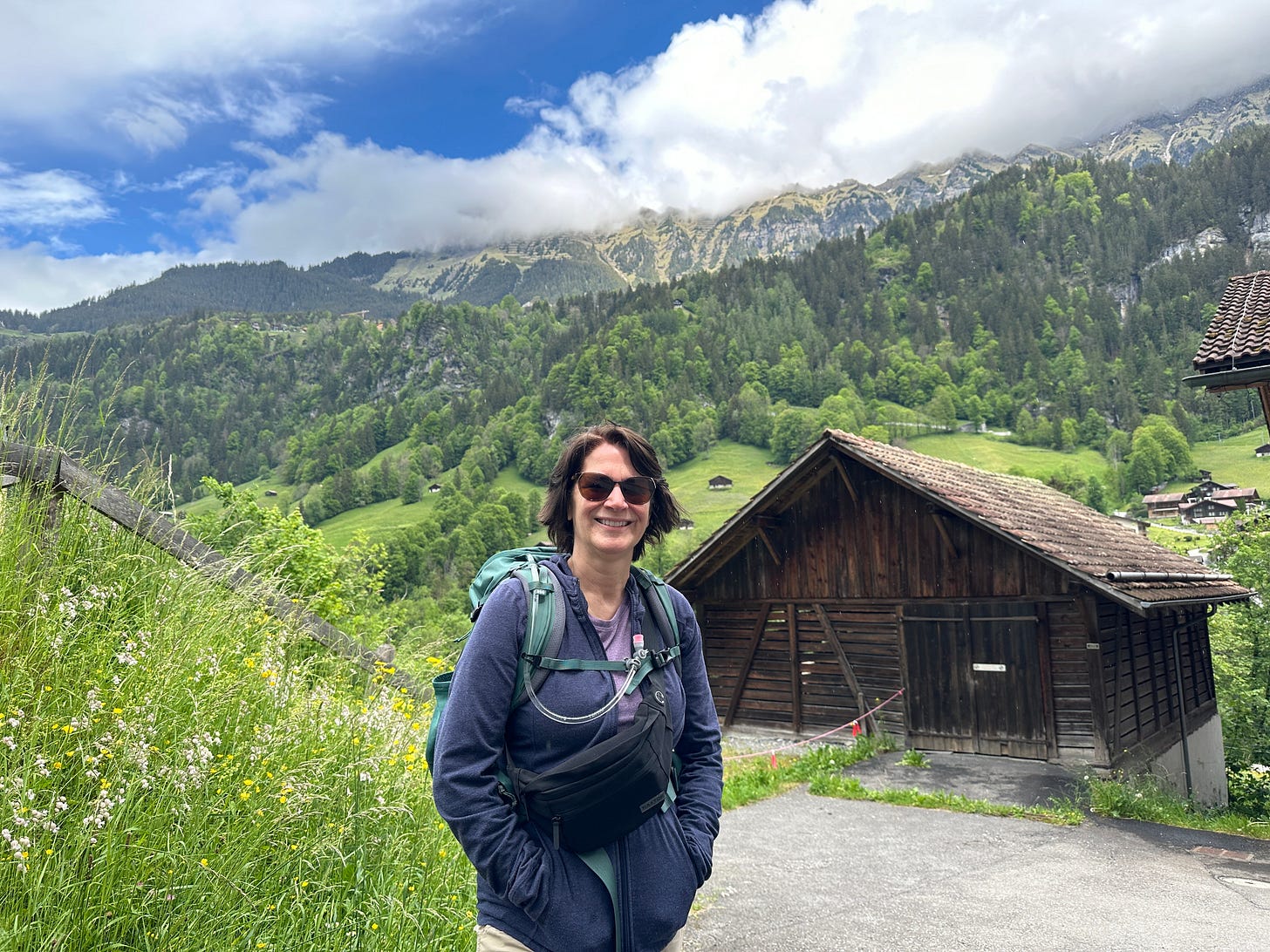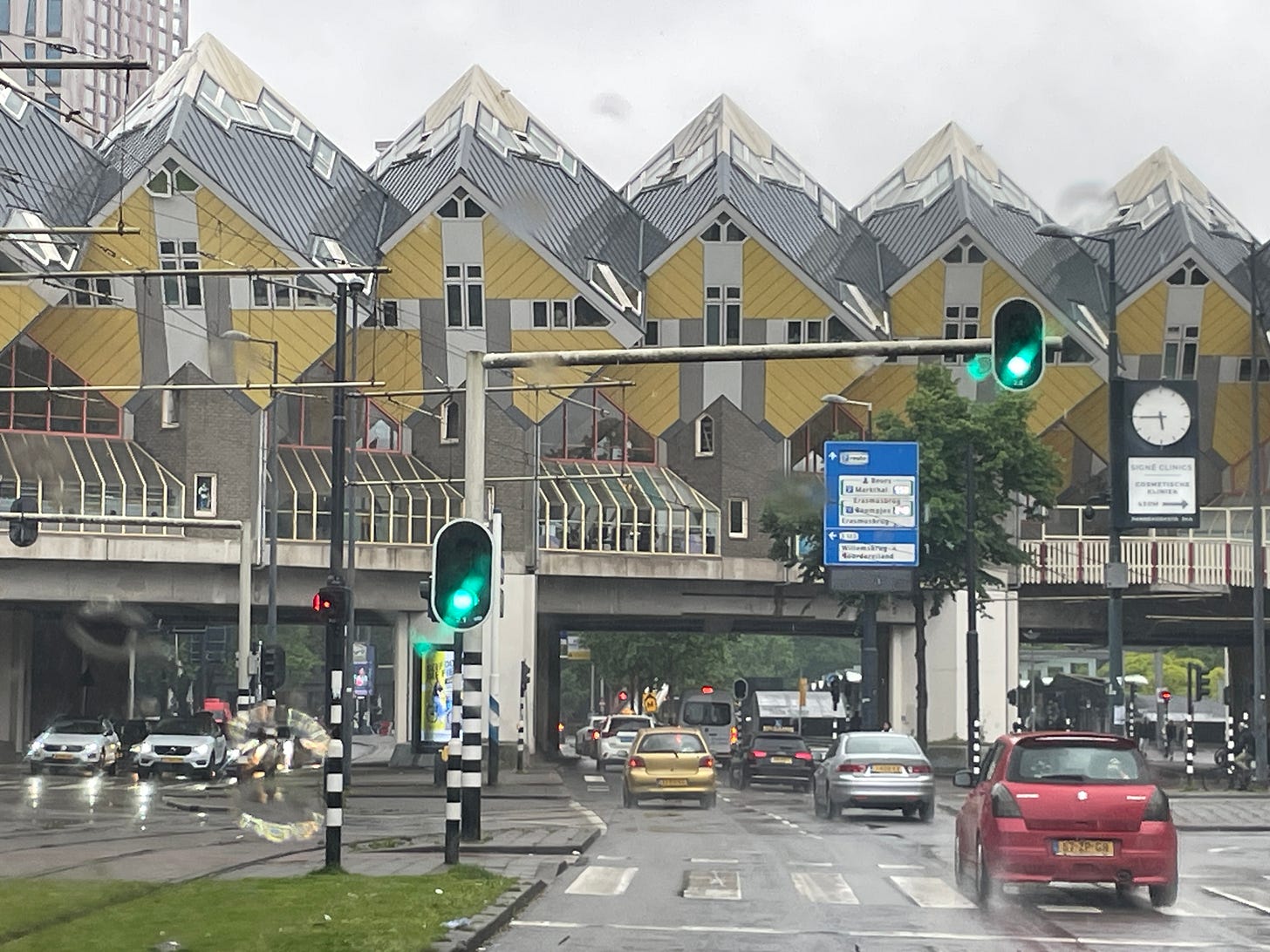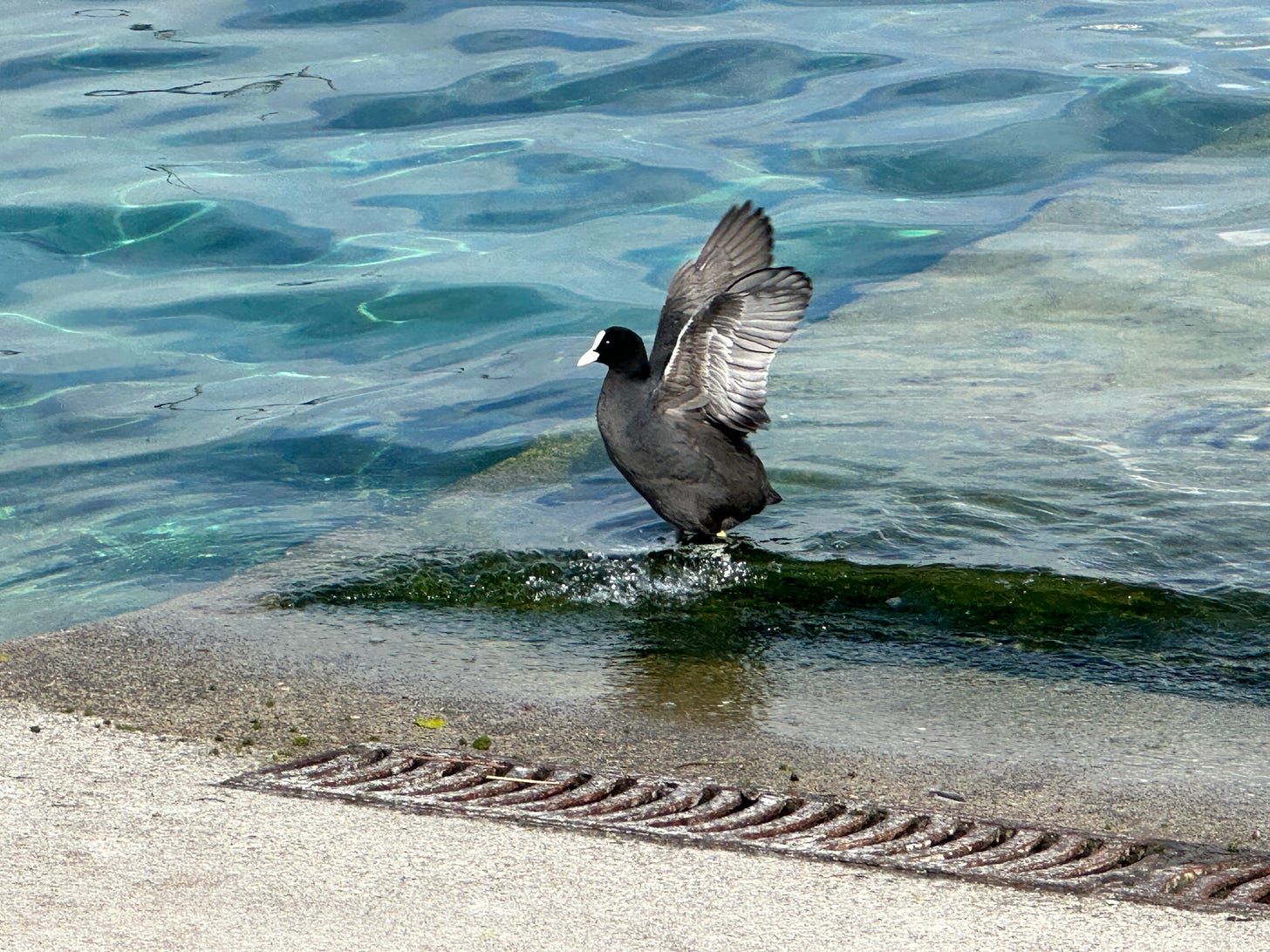Refugia Newsletter #68
Checking in from Vlissingen, NL, with energy transition news, a Swiss snail, and some urban housing design
Refugia News
Bienvenu! And welkom! This week’s newsletter will be a short one, as promised last time.
I am in the midst of an epic journey with my family in Switzerland, the Netherlands, and Scotland. An odd combination of destinations, I know, but this particular trip is serving a variety of purposes, including, along the way, reporting to you on climate-related sites, especially in the Netherlands. Since we’ve just now arrived in Zeeland, I will have much more to report next time, on June 9. After that, we’ll go back to our usual format for this newsletter on June 22: news roundup, deeper dive, refugia sightings, and other good stuff.
Meanwhile, a few photos, just for fun, from the first leg of our journey in Switzerland. We enjoyed a lovely hike (well, more like a stroll) in the Lauterbrunnen Valley.
And we marveled at a spectacular view of the Alps from the top of Harder Kulm. Um, well, I’m sure it would have been spectacular if it hadn’t been pouring rain, the mountains enveloped in thick clouds. Alors, c’est la vie. (I should probably say that in German, but I studied French in college.) Thankfully, we got up there via enclosed funicular.
The hills are alive… I guess.
I did meet this charming fellow at the top of the mountain, though. Points to any reader who can identify the species.
For those of you who have any interest in the Protestant Reformation of the sixteenth century, I highly recommend the small but mighty International Museum of the Reformation, in Geneva. I know it’s hard to imagine telling the story of the Reformation with humor and panache, but they manage. This little treasure of a museum is situated right next to the church where John Calvin frequently preached in Geneva. I admit, I thought the pulpit was awfully elaborate for a serious fellow like good ol’ JC.
This Week in Climate News
Two good news stories on energy transition. Even while traveling, I’m watching the climate news a little bit. This new report, released May 8, from the nonprofit UK think tank Ember, offers encouraging news. Here’s their summary:
Renewables generated a record 30% of global electricity in 2023, driven by growth in solar and wind. With record construction of solar and wind in 2023, a new era of falling fossil generation is imminent. 2023 was likely the pivot point, marking peak emissions in the power sector.
And here’s another key paragraph to sum up the findings:
The decade ahead will see the energy transition enter a new phase. A permanent decline in fossil fuel use in the power sector at a global level is now inevitable, leading to falling sector emissions. Clean electricity additions – led by solar and wind – are already forecast to outpace demand growth in the coming decade, securing moderate reductions in fossil fuel use and hence emissions, even as demand accelerates to meet the growing needs of electrification and other booming technologies.
You can read the Executive Summary in a few minutes, and of course they share their methodology and data sources in the full report.
Transition is great, but… how??
If you wonder how on earth this massive energy transition could ever work to scale, I recommend yet another episode of the ever-marvelous Volts podcast. In the May 15 episode, host David Roberts interviews Lorenzo Kristov on “envisioning a more democratic, bottom-up energy system.” In other words, rather than only swapping out our gigantic, centralized, fossil fuel energy plants with gigantic, centralized, solar, wind, and hydro plants and then attaching everyone up to those, why not actually change the way we source and distribute energy?
Imagine putting solar panels and battery storage on every big warehouse roof. The warehouse owner leases out the space, and the rooftop solar becomes part of a local energy grid that includes lots of smaller “producers,” including home owners, houses of worship, etc. Then, we draw most of our energy from a locally managed grid that circulates energy around from these local producers. It’s called “distributed energy.” There’s centralized backup, sure, but it just makes a lot more sense and greatly reduces demand on big transmission infrastructure. Result: locally managed energy markets, lower costs for consumers, extra income for “producers,” locally adapted and resilient energy creation—and more. Sound too good to be true? Well, they’re doing it in California. And Maine is working on it, too.
Sightings of Cool Stuff
Finally, not exactly a refugia sighting, but we did get a look at these wildly cool cube houses in Rotterdam.
Aren’t you glad you can see these in the rain? Would you want to live in one?
We couldn’t tour them because we arrived after hours in Rotterdam, but you can read more about them on their website. People do live there! They were built in the 1980s as an experiment in urban housing design.
The purpose of the Netherlands part of our trip—husband Ron and I are here with our adult children—is to visit the places from which my maternal grandparents emigrated around the turn of the twentieth century, and from which Ron’s great-grandparents emigrated in the nineteenth. Happily, our ancestry-related visits bring us near some magnificent Dutch engineering works for water and coastline management as well as some great ecosystem conservation sites. More next time.
For now, enjoy this Eurasian Coot, spotted along Lake Geneva. Did you know that coots and grebes and ducks are all different? My daughter, Mia, is a skilled bird spotter and identifier, and we learned all about the differences, including the fact that coots do not have webbed feet, they have lobed feet! I’ll leave it to you to look up what those look like.
Image credit: Mia Rienstra Bareman.
Thanks for reading. As always, till next time: be well.










I was in Geneva (I have been elected to the World Council of Churches' Commission on Climate Justice and Sustainable Development) in March. The Museum of the Reformation was absolutely incredible! Did you climb up to the top of the tower of the church?